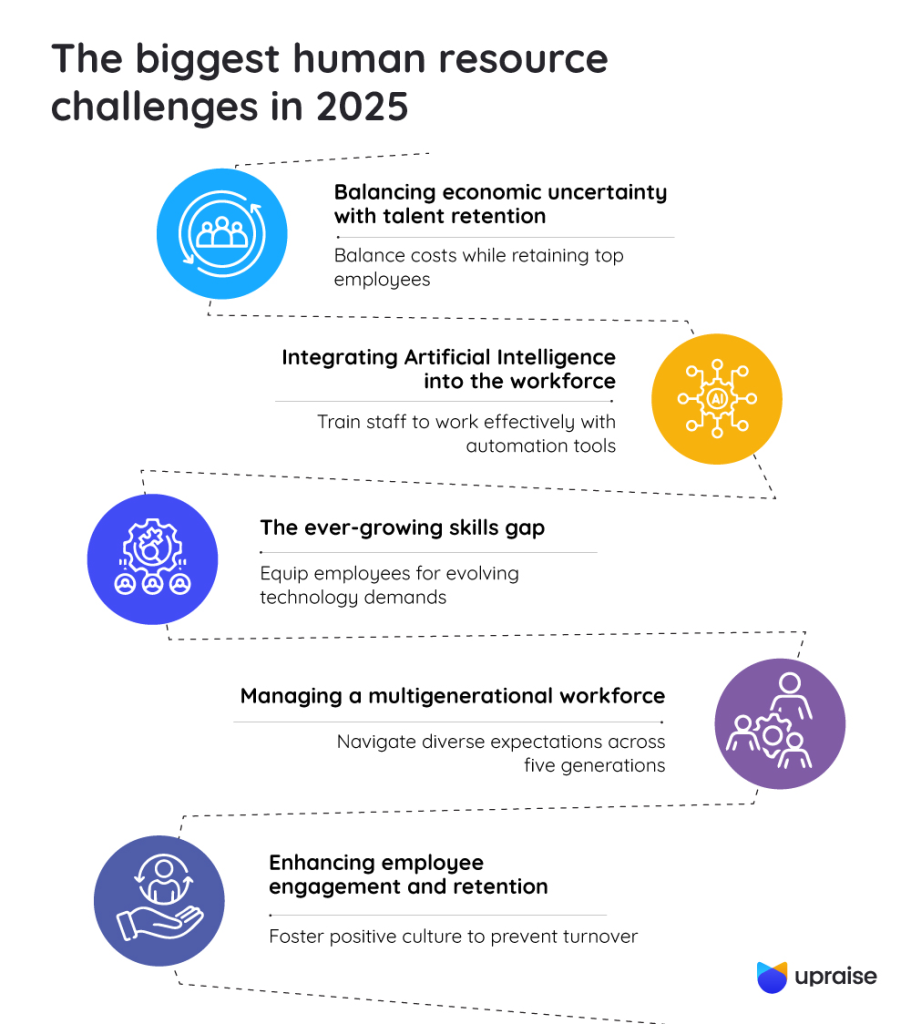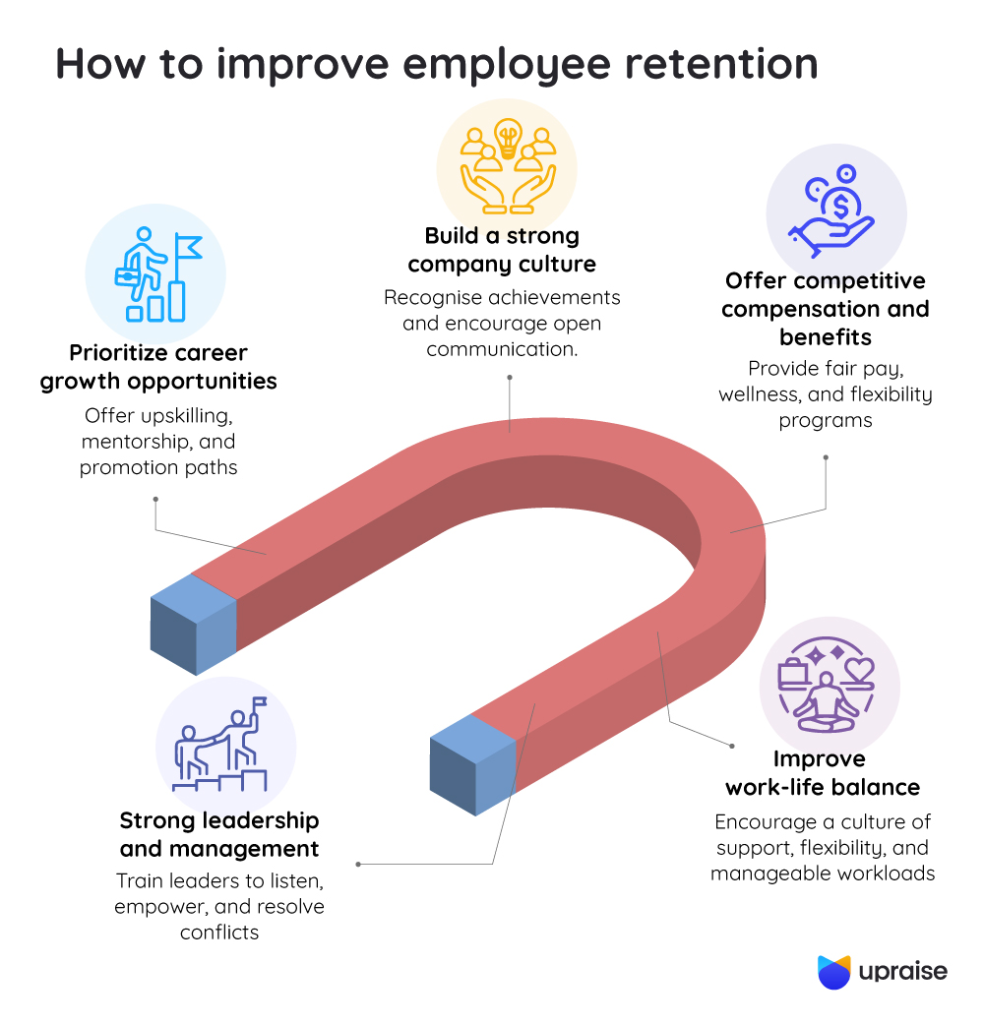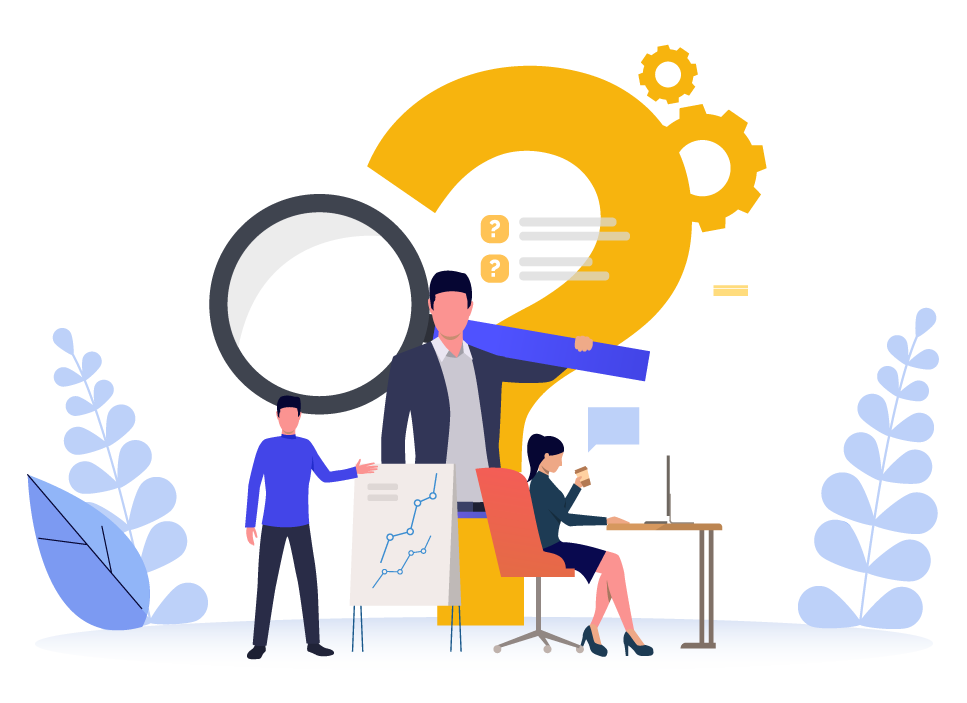Do you feel that as an HR professional, you are constantly handling conflicts, employee expectations and performance concerns? Your role is essential, yet trying to motivate and engage employees feels like a never-ending struggle.
Gallup estimates that low engagement costs the global economy a staggering $8.9 trillion – 9% of global GDP. The study’s numbers paint a concerning picture:
- Only 23% of employees are engaged at work.
- 62% are just going through the motions.
- 15% are actively disengaged, which means they could be hurting team morale rather than contributing to it.
Employee disengagement isn’t just an HR issue – it’s a business problem that impacts productivity, retention and overall company success.
The good news is that HR problem-solving doesn’t have to be reactive. You can efficiently address these challenges head-on and create a thriving workplace for employees by including agile HR best practices.
This blog will explore the top 5 HR issues and provide actionable solutions to help you build a more engaged and high-performing workforce.
The biggest human resource challenges in 2025
From AI reshaping job roles to employees expecting more flexibility than ever, HR professionals have their hands full in the modern workplace. Whether it is integrating AI, managing upskilling drives or dealing with human resources challenges, HR executives today need to learn to think outside the box. Let’s break down the biggest HR issues this year and how they’re shaking up workplaces:

1. Balancing economic uncertainty with talent retention
With market fluctuations and layoffs making headlines, HR teams are caught in a tug-of-war between cutting costs and keeping top talent. Employees, on the other hand, are reconsidering job stability – some are jumping ship for better pay, while others are quietly disengaging.
2. Integrating Artificial Intelligence into the workforce
Tools like ChatGPT, automation software and predictive analytics are changing how we work. But while AI makes HR processes faster and smarter, it also raises concerns: Will jobs be replaced? How do we train employees to work with AI?
3. The ever-growing skills gap
With technology evolving at breakneck speed, employees struggle to keep up. A marketing specialist today is expected to know AI-driven analytics, while a customer support rep might need automation skills. The problem? Most employees aren’t trained for these shifts.
4. Managing a multigenerational workforce
For the first time in history, workplaces have five generations working together. From Baby Boomers to Gen Alpha. Their work styles and expectations are completely different and, in some cases, might even be in conflict. While Boomers value loyalty and stability, Gen Z wants flexibility and purpose-driven work.
5. Enhancing employee engagement and retention
Employee engagement remains a top concern. Disengagement leads to burnout, quiet quitting and ultimately – high turnover. Implementing the best HR strategies that foster a positive work environment is essential for retaining talent.
The wide variety of challenges means organizations have to take up a new approach to HR problem-solving. Let’s take a look at some of the best HR strategies and practices to keep enterprises running smoothly. And employees are happy.
Solutions to common HR issues
Every HR professional faces a mix of predictable and surprising Human Resources challenges. Most HR issues have practical solutions if tackled with the right mindset (and tools). Here’s how to approach some of the most common ones:
- Low employee engagement: Make feedback continuous, not quarterly. Use tailored tools to enable real-time recognition, peer-to-peer praise and ongoing conversations to help accelerate growth.
- High turnover: Start by listening. Regular pulse surveys and one-on-one conversations can reveal what’s really driving people away.
- Performance management gaps: Align individual goals with team OKRs. Not only does this provide clarity, it gives employees purpose and covers gaps in performance management.
- Data overload in decision-making: Use smart HR tech to turn metrics into action. Track engagement, training and goals in one place.
- Skills gaps: Focus on upskilling, not just hiring. Support learning paths that align with future project needs.
Modern tools and techniques can help deal with most HR issues. Let’s analyze one of the most common challenges: ensuring employee retention.
How to improve employee retention
Keeping employees engaged is one of the biggest HR issues today. High turnover disrupts workflows and costs businesses heavily. Work-life balance disruption, remuneration gaps and a host of other issues can end up causing conflict in the workplace. Here are some HR best practices that will help you retain top talent:

1. Prioritize career growth opportunities
Employees leave when they feel stuck. Offer upskilling, mentorship and paths to promotion. Implement HR best practices like internal hiring to boost retention as well. High employee turnover comes with significant financial costs, loss of expert and institutional knowledge and loss of morale and efficiency.
2. Build a strong company culture
A toxic workplace pushes employees away – focus on open communication. Recognize achievements regularly to keep employees motivated. Take steps to make sure that employees feel motivated, satisfied, and committed. Employees who feel connected to company goals and their co-workers will be willing to apply themselves and dive into their work.
3. Offer competitive compensation and benefits
Salary matters, but so do benefits like wellness programs and flexibility. Stay competitive with market-based salary adjustments and promote a policy that matches your competitors. Offer professional, interpersonal and emotional support to your employees so that they are motivated to accomplish their work.
4. Improve work-life balance
Burnout kills engagement. Do your best to promote reasonable workloads and flexibility. Use best HR strategies like remote work or no-meeting Fridays to lighten employees’ burdens and give them a break from dull routines. Promote openness in communication and supportive work culture, and check in with your workforce regularly to assess their well-being.
5. Strong leadership and management
Bad managers drive turnover – train your leadership in people skills. Encourage them to listen, support and empower teams. At the same time, ensure that your HR department is trained in conflict resolution strategies and problem-solving.
Human resources challenges come in many shapes and forms. In today’s fast-paced, competitive and data-driven environment, traditional practices are often lacking and unable to cope with challenges. You need to invest in specialized automation tools and software to increase efficiency and deal with most HR issues.
The future of HR technology
HR problem-solving in 2025 is being driven by tech that’s smarter, faster and built for flexibility. As digital tools evolve, they’re helping teams tackle complex HR issues. Here’s what’s shaping the future of HR technology in 2025:
1. AI-powered onboarding
AI-powered onboarding is transforming how organizations integrate new employees. The practice offers many benefits, including efficiency, real-time support, faster turnaround time and freeing up humans for more critical tasks. Companies like Hitachi use AI to automate onboarding, cutting manual effort and creating smoother experiences.
2. Performance and engagement platforms
Rely on tools that integrate with platforms & workflows that are native to your teams – like Jira, to help HR and team leaders manage OKRs, as well as continuous feedback and performance reviews. Such tools make tackling human resource challenges like disengagement and lack of clarity in goals hassle-free.
3. Fixing skills gaps with AI
AI-based tools can be leveraged to sift through large datasets to identify skill gaps, offer personalized recommendations and drive a scalable skilling model. These tools will help organizations maintain their competitive edge in the marketplace. DHL and Johnson and Johnson are turning to AI to assess employee skills, identify gaps and drive internal mobility – an HR best practice.
4. Handle AI with care
As AI-based tools become more and more integrated into the workplace, they’ve sparked conversations about employee trust and privacy. With the rise of AI-based tracking tools in offices, this is one of the key HR issues to navigate. Your leaders need to ensure that they don’t overstep in terms of utilizing AI to monitor workers or drive policy decisions.
5. The HR tech boom continues
HR software demand is growing. Especially among small and mid-size businesses. Advantages like ease of access, convenience in utilization and efficient scalability mean that AI is here to stay. Fingercheck’s recent acquisition shows just how popular it is becoming.
The benefits offered by AI-based automation and data-driven insights have made what was once a fancy luxury turn into an essential component in the marketplace.
Compliance and workplace regulations
Compliance isn’t the most exciting part of HR, but it’s one of the most critical. In 2025, keeping up with constantly changing labour laws, remote work policies, DEI mandates and data privacy regulations is a full-time job in itself.
For HR professionals, the challenge lies in staying informed while also ensuring that teams follow the rules without it feeling like red tape. Failing to comply doesn’t just risk legal trouble; it can seriously damage your company’s reputation and employee trust.
That’s why more HR teams are treating compliance as a proactive part of their best HR strategy rather than a reactive checklist. Whether using digital tools to track policy changes or embedding training into onboarding, the key is to build an easy-to-follow compliance culture.
Conclusion
In 2025, HR teams will be more focused on solving people’s problems than solving business problems. From keeping up with evolving compliance laws to tackling the skills gap, the pressure on HR is real. But so is the potential. The real shift happens when you move from reacting to problems to building systems that prevent them. HR issues can be solved with the right mix of mindset and tools.
FAQs
How can HR leaders manage multigenerational workforces?
Get to know what each generation values, then build flexible policies, encourage mentorship and create space for everyone to contribute in their own way. Train your HR executives in conflict resolution and find inclusive, positive solutions.
How can businesses improve their employer branding?
Start by treating your employees well, and then share those stories. People connect with real experiences, not just mission statements and fancy career pages.
What role does AI play in modern HR solutions?
AI helps HR teams work smarter and not harder. It takes care of the repetitive stuff and gives you insights to make better decisions about people and processes.




